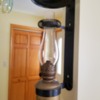I have long admired the Erie Lackawanna, counting it among my favorite railroads alongside the Nickel Plate and the Bessemer. The former mainline runs right through Greenville, the community that I went to college and whose railroad park that I volunteer at. Up until the Conrail years, nearby Meadville was home to major yard and facilities. I was just intrigued how this New York to Chicago mainline passed through my neck of the woods. It also helps when every other railfan and historian in the area is a big fan of the Erie Lackawanna.
Then there’s the Erie. I have noticed that the Erie seems almost forgotten. I honestly once considered the Erie and EL to be the same railroad given the Erie’s size compared to the Lackawanna. It seems to me that the EL overshadows the Erie to the point its almost been forgotten. I would like to hear what everyone else thinks on this matter. A couple theories that I have are the following as to why the Erie maybe over looked.
- The route. Erie went from New York to Chicago, and some say, got lost along the way. Erie Power describes it as the longest, but least cluttered route. The only major traffic source that the route passed through was the Youngstown area.
- The paint schemes. The EL decided to use the DL&W paint scheme rather than the Erie’s black with yellow lettering and stripes. This made the EL classic in that era.
- Erie Preservation or lack thereof. The Erie did not preserve a single steam locomotive, unlike fellow Cleveland roads the Nickel Plate and C&O. They retired their locomotives early and during the Korean War, likely contributing to the loss.
- The Weary Erie. The Erie had the reputation of being a troubled and sickly railroad. This reality continued with the Erie Lackawanna. Except there are many EL fans who believe that the route could have survived and thrived in the intermodal era.
I was wondering what every one else has to think on this matter pertaining to the late and great Erie Railroad.











